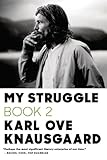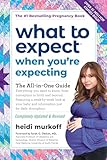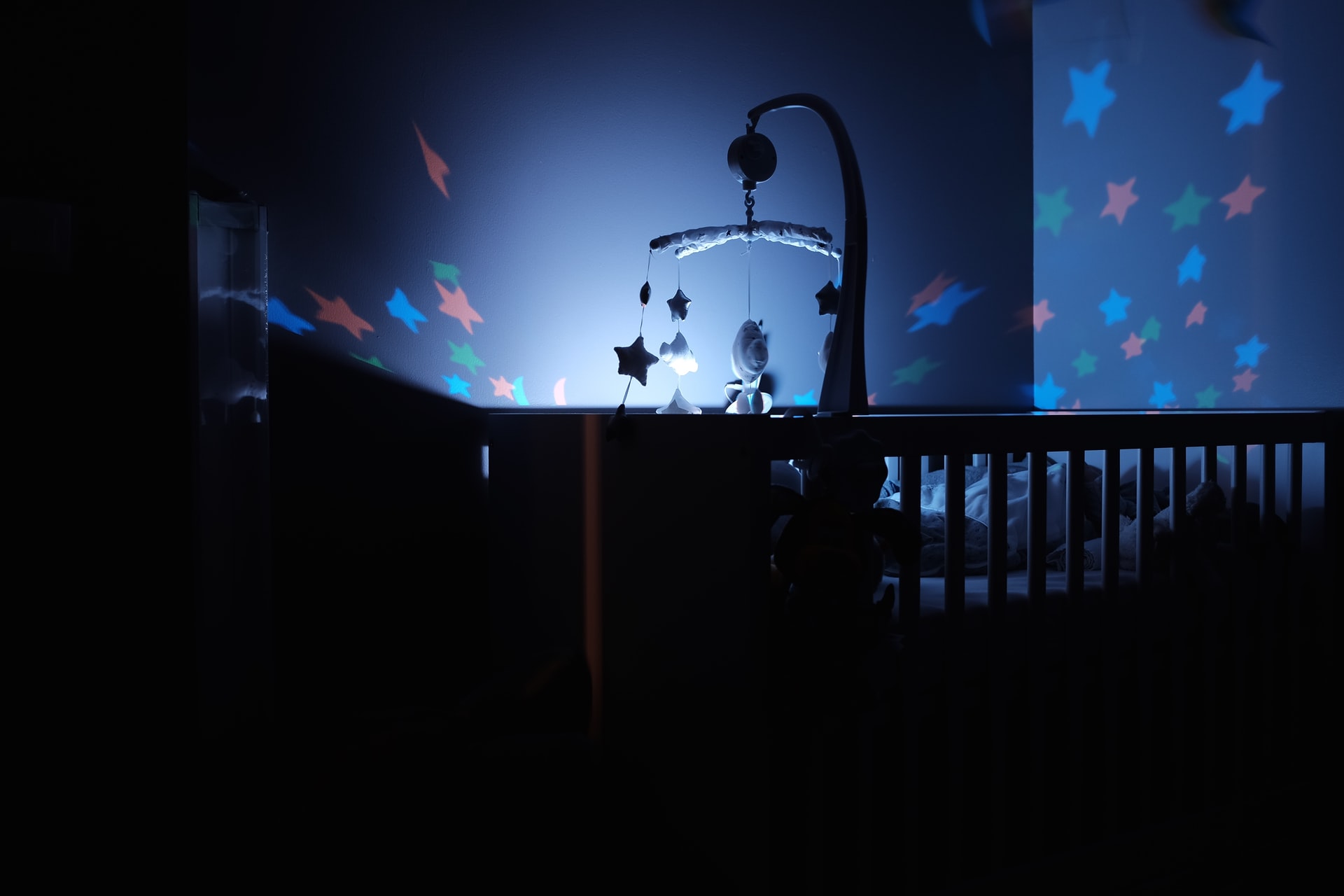 At the beginning of A Man in Love, Karl Ove Knausgaard is at a birthday party with his wife and three children. He eats cake, changes diapers, lets us know how bad he is at small talk and then proves it when he gives a woman his opinion on only children. “The single-child scenario seems a bit sad if you ask me,” he tells her before learning that she has one child, not by choice but because she can’t find a suitable mate for the second. “What the fuck does this have to do with me?” he wonders and is then saved from further awkward conversation by his oldest daughter. For all of Knausgaard’s struggles, procreation is not one of them.
At the beginning of A Man in Love, Karl Ove Knausgaard is at a birthday party with his wife and three children. He eats cake, changes diapers, lets us know how bad he is at small talk and then proves it when he gives a woman his opinion on only children. “The single-child scenario seems a bit sad if you ask me,” he tells her before learning that she has one child, not by choice but because she can’t find a suitable mate for the second. “What the fuck does this have to do with me?” he wonders and is then saved from further awkward conversation by his oldest daughter. For all of Knausgaard’s struggles, procreation is not one of them.
He can even pinpoint the exact moment he and his wife conceive their second child. “When I came, I came inside her,” he writes. “That was all I wanted. Afterwards we lay close to each other for a long time without speaking. “Now we’ll have another child,” I said at length.” If I’d read this one year ago, two years ago, I would’ve rolled my eyes, maybe thrown the book across the room. Instead I was five months pregnant, and although I did think, Oh, come on, Karl Ove, I also thought: how sweet to have that certainty, how lucky to have a memory of that momentous occasion.
 Knausgaard writes a lot about his wife’s pregnancies. I found myself studying the details with a strange kind of intensity before realizing that, oh god, I was using the book as a guide to pregnancy and childbirth. This had not been my intention. I thought that when I got a positive pregnancy test I would throw myself into the world of pregnancy literature, but I’d resisted. There was no excited trip to the bookstore to buy What to Expect When You’re Expecting. It was nerves at first, but even when I passed the first trimester mark, I only halfheartedly picked Ina May Gaskin’s guide to childbirth off the shelf. I flipped through it quickly and then squirreled it away in a drawer, out of sight along with other baby items that had accumulated over the past few weeks – some presents from friends, pamphlets from doctors, samples that had mysteriously found their way to our mailbox.
Knausgaard writes a lot about his wife’s pregnancies. I found myself studying the details with a strange kind of intensity before realizing that, oh god, I was using the book as a guide to pregnancy and childbirth. This had not been my intention. I thought that when I got a positive pregnancy test I would throw myself into the world of pregnancy literature, but I’d resisted. There was no excited trip to the bookstore to buy What to Expect When You’re Expecting. It was nerves at first, but even when I passed the first trimester mark, I only halfheartedly picked Ina May Gaskin’s guide to childbirth off the shelf. I flipped through it quickly and then squirreled it away in a drawer, out of sight along with other baby items that had accumulated over the past few weeks – some presents from friends, pamphlets from doctors, samples that had mysteriously found their way to our mailbox.
 But maybe it wasn’t so surprising: I’d had the same attitude while trying to get pregnant. It started off fine – I dutifully read Taking Charge of Your Fertility, bought a basal body thermometer, became familiar with my cycle. Then my husband and I figured out that our bodies had different intentions. If we were going to have a baby, it would require more intervention than charting my temperature and monitoring cervical mucus. Everything I learned next came from doctors, nurses, and specific Internet searches. I sifted through pages of message boards, but even the most helpful information was coded in endless acronyms: DH, TTC, OPK, CM, BD, 2WW, HPT, POAS, BFP, BFN, IUI, IVF, DPO, AF. I craved books again, real words, but I was picky about the texts. I didn’t want guides; I just wanted to read what I normally read. I was, I suppose, trying to reassure myself that whatever was happening to me was common enough, normal enough, to easily crop up in my regular life reading.
But maybe it wasn’t so surprising: I’d had the same attitude while trying to get pregnant. It started off fine – I dutifully read Taking Charge of Your Fertility, bought a basal body thermometer, became familiar with my cycle. Then my husband and I figured out that our bodies had different intentions. If we were going to have a baby, it would require more intervention than charting my temperature and monitoring cervical mucus. Everything I learned next came from doctors, nurses, and specific Internet searches. I sifted through pages of message boards, but even the most helpful information was coded in endless acronyms: DH, TTC, OPK, CM, BD, 2WW, HPT, POAS, BFP, BFN, IUI, IVF, DPO, AF. I craved books again, real words, but I was picky about the texts. I didn’t want guides; I just wanted to read what I normally read. I was, I suppose, trying to reassure myself that whatever was happening to me was common enough, normal enough, to easily crop up in my regular life reading.
 Only there wasn’t a lot to read. In Joan Didion’s Blue Nights, there were hints of things not going according to plan, brief enough to go unnoticed if you weren’t looking, but I was looking. In a tiny three-page chapter spaced between details of her daughter Quintana’s adoption and early childhood, Didion writes about her sudden desire to have children in her mid-twenties. One day she goes to her doctor because of a pregnancy scare, but he can’t definitively tell her if she’s pregnant or not. “A day later I started to bleed, and cried all night.” She realizes she was sad about not being pregnant. I reread those three pages a few times; the experience was similar to something I’d gone through. I wondered what happened in the gap between the crying and the adoption. Did she try to get pregnant on purpose afterwards? Did she decide she didn’t want to? I had no business knowing intimate details about her gynecological life and that this intrusive musing said more about me and how desperate I was to find someone I could relate to. Still, I couldn’t help but think how reassuring it would’ve been to read an essay on infertility written in that soothing Didion cadence. Imagine! John and I have decided we would like a baby. It is nine months later, and there is still no baby.
Only there wasn’t a lot to read. In Joan Didion’s Blue Nights, there were hints of things not going according to plan, brief enough to go unnoticed if you weren’t looking, but I was looking. In a tiny three-page chapter spaced between details of her daughter Quintana’s adoption and early childhood, Didion writes about her sudden desire to have children in her mid-twenties. One day she goes to her doctor because of a pregnancy scare, but he can’t definitively tell her if she’s pregnant or not. “A day later I started to bleed, and cried all night.” She realizes she was sad about not being pregnant. I reread those three pages a few times; the experience was similar to something I’d gone through. I wondered what happened in the gap between the crying and the adoption. Did she try to get pregnant on purpose afterwards? Did she decide she didn’t want to? I had no business knowing intimate details about her gynecological life and that this intrusive musing said more about me and how desperate I was to find someone I could relate to. Still, I couldn’t help but think how reassuring it would’ve been to read an essay on infertility written in that soothing Didion cadence. Imagine! John and I have decided we would like a baby. It is nine months later, and there is still no baby.
 After awhile I remembered Amy Fusselman’s The Pharmacist’s Mate, which I’d read when it was published back in 2002, before the idea of having problems having children or even having children crossed my mind. It’s a slim, pitch perfect book about Fusselman’s father’s death and her fertility issues. I reread it and realized I’d already known how intrauterine insemination – IUI – worked before my doctor explained it because of her description of it. The book is funny and wistful and sad and captures the absurdity of the whole trying-to-conceive process. She calls the company that makes transvaginal ultrasound machines to ask how they work, she plays AC/DC songs on her acoustic guitar to pass the time. And then she gets pregnant and you’re so, so happy for her.
After awhile I remembered Amy Fusselman’s The Pharmacist’s Mate, which I’d read when it was published back in 2002, before the idea of having problems having children or even having children crossed my mind. It’s a slim, pitch perfect book about Fusselman’s father’s death and her fertility issues. I reread it and realized I’d already known how intrauterine insemination – IUI – worked before my doctor explained it because of her description of it. The book is funny and wistful and sad and captures the absurdity of the whole trying-to-conceive process. She calls the company that makes transvaginal ultrasound machines to ask how they work, she plays AC/DC songs on her acoustic guitar to pass the time. And then she gets pregnant and you’re so, so happy for her.
 I found Molly Ringwald’s linked short story collection, When It Happens to You. In “The Harvest Moon”, Greta and Phillip try for their second child despite the quiet, slow dissolve of their relationship. Greta gives herself injections for an IVF cycle relying on a YouTube video for instructions. In “The Places You Don’t Walk Away From”, Greta and Phillip are back. They produced embryos, but didn’t use them. Instead they separated, put the embryos in storage and, a year later, have to document what to do with them in their divorce papers. It’s such a distinctly modern dilemma: who knew that you might have to one day decide whether to destroy, freeze or donate excess embryos, that these microscopic cellular bundles could even be preserved for later use?
I found Molly Ringwald’s linked short story collection, When It Happens to You. In “The Harvest Moon”, Greta and Phillip try for their second child despite the quiet, slow dissolve of their relationship. Greta gives herself injections for an IVF cycle relying on a YouTube video for instructions. In “The Places You Don’t Walk Away From”, Greta and Phillip are back. They produced embryos, but didn’t use them. Instead they separated, put the embryos in storage and, a year later, have to document what to do with them in their divorce papers. It’s such a distinctly modern dilemma: who knew that you might have to one day decide whether to destroy, freeze or donate excess embryos, that these microscopic cellular bundles could even be preserved for later use?
 And maybe because it’s a relatively new phenomenon that’s finally being discussed more openly, more and more books are being published that I would’ve loved to read then when I was looking. In Ben Lerner‘s 10:04, the main character acts as a sperm donor for his best friend’s baby. He writes about the room where men do their thing – the porn, the television, the couch – and then spirals into an exaggerated neurosis of the instruction given to keep his hands clean so he won’t contaminate the sample. It reminded me of a picture my husband once texted me from a similar room: a pump bottle of soap with a label that said, HAND SOAP. DO NOT USE AS LUBRICANT.
And maybe because it’s a relatively new phenomenon that’s finally being discussed more openly, more and more books are being published that I would’ve loved to read then when I was looking. In Ben Lerner‘s 10:04, the main character acts as a sperm donor for his best friend’s baby. He writes about the room where men do their thing – the porn, the television, the couch – and then spirals into an exaggerated neurosis of the instruction given to keep his hands clean so he won’t contaminate the sample. It reminded me of a picture my husband once texted me from a similar room: a pump bottle of soap with a label that said, HAND SOAP. DO NOT USE AS LUBRICANT.
 There’s a fertility clinic in Emily Gould‘s Friendship too. Sally is close to 40 and wants children. In the waiting room she pages through Plum, “the magazine for mature mothers.” It’s a fact that fertility clinics have the most varied selection of magazines. At my clinic I would slip copies of the New Yorker in my bag if I didn’t finish an article before seeing the doctor; I was paying enough to be there, I figured, to keep it.
There’s a fertility clinic in Emily Gould‘s Friendship too. Sally is close to 40 and wants children. In the waiting room she pages through Plum, “the magazine for mature mothers.” It’s a fact that fertility clinics have the most varied selection of magazines. At my clinic I would slip copies of the New Yorker in my bag if I didn’t finish an article before seeing the doctor; I was paying enough to be there, I figured, to keep it.
In both 10:04 and Friendship the cost associated with these kinds of treatments are openly discussed. Lerner uses an IUI as a unit of currency – the “strong, six figure advance” the main character gets for his book is broken down into fifty-four IUIs, and the fact that the money can be used to fund the insemination is one of the main reasons for writing the proposal in the first place. For Sally in Friendship it’s her wealth that allows for the possibility of fertility treatments to happen, and when Bev – younger, poorer – gets pregnant accidentally, the reason they first get involved in each other’s lives is because Sally has the money to afford a baby and compensate Bev, while Bev can barely afford her own lifestyle, let alone one that includes another human.
These distillations of the monetary anxiety, how surreal and uncomfortable it is to assign price tags to it, along with the general existential and physical anxiety that accompanies the problem of wanting a child and not having one were what I was looking for and what I’m still looking for even if I’m not necessarily in that stage anymore. It just took some time to cobble together a reading list to reflect it all.
During that waiting period, a friend who knows things about the Bible and can find comfort in it in a way that I’ve always had trouble with emailed me the story of Hannah and Elkanah from the Old Testament. Samuel 1:1 starts off like this, “Elkanah… had two wives; one was called Hannah and the other Peninnah. Peninnah had children, but Hannah had none.” They pray for a child, but Hannah’s fervent, passionate praying is mistaken for drunkenness. When it’s clarified that she wasn’t drunk (even though she should’ve had a few glasses of holy wine to take the edge off), her prayer is granted and she finally has a son, Samuel.
The treatments are modern, I suppose, but the narrative is ancient. As the main character in 10:04 says in an imagined conversation with his potential future progeny, “Everyone gets help making a baby, it’s never just a mom and a dad, because everybody depends on everybody else.” Sometimes it’s your friends and family, sometimes it’s your doctors and drugs, but, I’ve learned, you need stories to depend on too.
Image credit: Unsplash/Bastien Jaillot.









